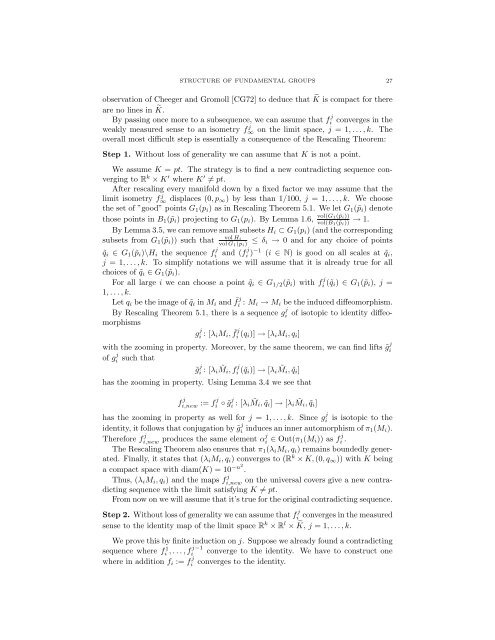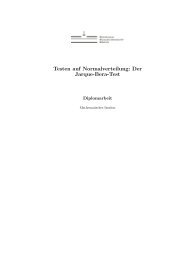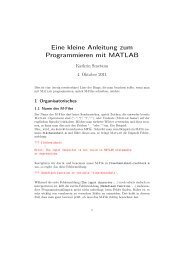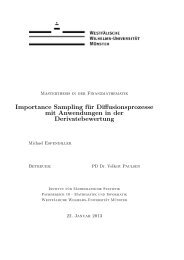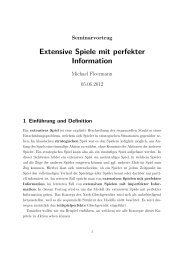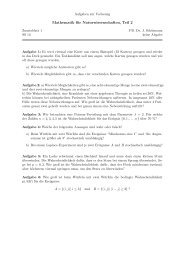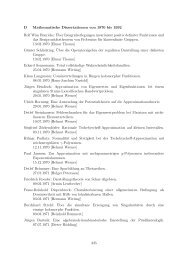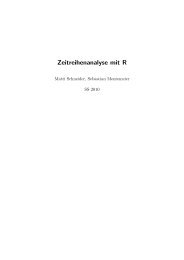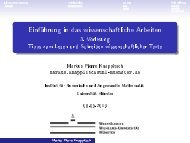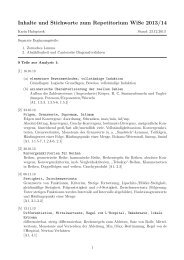Margulis Lemma
Margulis Lemma
Margulis Lemma
You also want an ePaper? Increase the reach of your titles
YUMPU automatically turns print PDFs into web optimized ePapers that Google loves.
STRUCTURE OF FUNDAMENTAL GROUPS 27<br />
observation of Cheeger and Gromoll [CG72] to deduce that ˜K is compact for there<br />
are no lines in ˜K.<br />
By passing once more to a subsequence, we can assume that f j i converges in the<br />
weakly measured sense to an isometry f∞ j on the limit space, j = 1, . . . , k. The<br />
overall most difficult step is essentially a consequence of the Rescaling Theorem:<br />
Step 1. Without loss of generality we can assume that K is not a point.<br />
We assume K = pt. The strategy is to find a new contradicting sequence converging<br />
to R k × K ′ where K ′ ≠ pt.<br />
After rescaling every manifold down by a fixed factor we may assume that the<br />
limit isometry f∞ j displaces (0, p ∞ ) by less than 1/100, j = 1, . . . , k. We choose<br />
the set of ”good” points G 1 (p i ) as in Rescaling Theorem 5.1. We let G 1 (˜p i ) denote<br />
those points in B 1 (˜p i ) projecting to G 1 (p i ). By <strong>Lemma</strong> 1.6, vol(G1(˜pi))<br />
vol(B → 1.<br />
1(˜p i))<br />
By <strong>Lemma</strong> 3.5, we can remove small subsets H i ⊂ G 1 (p i ) (and the corresponding<br />
subsets from G 1 (˜p i )) such that ≤ δ i → 0 and for any choice of points<br />
vol H i<br />
vol G 1(p i)<br />
˜q i ∈ G 1 (˜p i )\H i the sequence f j i and (f j i )−1 (i ∈ N) is good on all scales at ˜q i ,<br />
j = 1, . . . , k. To simplify notations we will assume that it is already true for all<br />
choices of ˜q i ∈ G 1 (˜p i ).<br />
For all large i we can choose a point ˜q i ∈ G 1/2 (˜p i ) with f j i (˜q i) ∈ G 1 (˜p i ), j =<br />
1, . . . , k.<br />
Let q i be the image of ˜q i in M i and ¯f j i : M i → M i be the induced diffeomorphism.<br />
By Rescaling Theorem 5.1, there is a sequence g j i of isotopic to identity diffeomorphisms<br />
g j i : [λ iM i , ¯f j i (q i)] → [λ i M i , q i ]<br />
with the zooming in property. Moreover, by the same theorem, we can find lifts ˜g j i<br />
of g j i such that ˜g j i : [λ i ˜M i , f j i (˜q i)] → [λ i ˜Mi , ˜q i ]<br />
has the zooming in property. Using <strong>Lemma</strong> 3.4 we see that<br />
f j i,new := f j i ◦ ˜gj i : [λ i ˜M i , ˜q i ] → [λ i ˜Mi , ˜q i ]<br />
has the zooming in property as well for j = 1, . . . , k. Since g j i is isotopic to the<br />
identity, it follows that conjugation by ˜g j i induces an inner automorphism of π 1(M i ).<br />
Therefore f j i,new produces the same element αj i ∈ Out(π 1(M i )) as f j i .<br />
The Rescaling Theorem also ensures that π 1 (λ i M i , q i ) remains boundedly generated.<br />
Finally, it states that (λ i M i , q i ) converges to (R k × K, (0, q ∞ )) with K being<br />
a compact space with diam(K) = 10 −n2 .<br />
Thus, (λ i M i , q i ) and the maps f j i,new on the universal covers give a new contradicting<br />
sequence with the limit satisfying K ≠ pt.<br />
From now on we will assume that it’s true for the original contradicting sequence.<br />
Step 2. Without loss of generality we can assume that f j i converges in the measured<br />
sense to the identity map of the limit space R k × R l × ˜K, j = 1, . . . , k.<br />
We prove this by finite induction on j. Suppose we already found a contradicting<br />
sequence where fi 1, . . . , f j−1<br />
i converge to the identity. We have to construct one<br />
where in addition f i := f j i converges to the identity.


